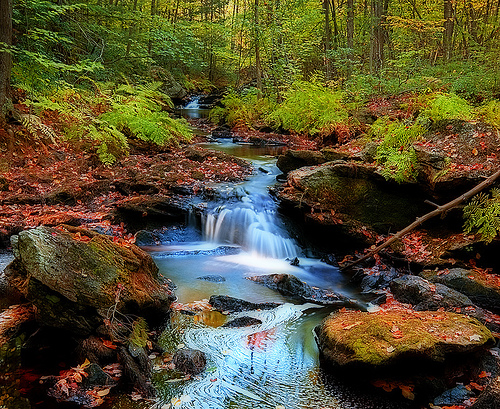Critical Analysis of Sunrise on the Hills
Though ‘Sunrise on the Hills’ may appear to be a simple poem, that does not diminish our enjoyment of it. The poet’s natural description show that he had a keen eye for detail and could express those details in his verse without making them seem banal. It is for this ability, and resting on the reputation of such poems like ‘Sunrise on the Hills’ that Longfellow was considered readers’ favourite poet of his age. Though he was writing in the 19th century, his sensibilities matched those of the Romantics. Like Wordsworth, Longfellow too worships Nature. Again like Wordsworth, Longfellow sees Nature as an escape from the human world as a whole, and the city in particular. It is the silence and solitude that one finds in Nature that appeals to the poet.
Poetic Devices
Rhyme scheme:
All thirty-six lines of ‘Sunrise on the Hills’ form rhyming couplets in the simple rhyme scheme- AABB and so on. 20th century criticism teaches us to value poems for their complexity and that is why a poet like Longfellow has since his day fallen out of favour. However it is his use of simple rhyme schemes like the one in this poem that give Longfellow’s work the kind of accessibility among readers that has made him so popular.
Rhetorical devices:
1st stanza:
Personification: This rhetorical device is used when a poet wants to endow a non-living thing with human qualities and abilities. The poet uses this device in the second line when he imagines the sun marching along the sky, in the fourth line when he imagines the wind kissing the valley, in the eighth line when he sees the sun and the clouds as armies on the opposing sides of a battlefield and in the tenth line when he sees the mountains as cavalrymen preparing for battle with their lances raised above their heads.
3rd stanza:
Use of antiquated language: Longfellow uses words like “thou”, “thy” and “wouldst” in this stanza. These words were commonly in use in earlier times, especially in the 15th & 16th centuries. However because of poetic license, poets like Longfellow and many others used these words to bring in a sense of nobility in their verse, and to revive the usage of such words in the English language.
Central Idea of the Poem
In ‘Sunrise on the Hills’, the poet wishes to show us that there is much to see in Nature. Though Nature may appear to be peaceful, conflicts abound there as well- between the sun and the clouds, between the mountains and the valleys, and between the swift flow of a river and the stillness of a lake. However, Nature is beautiful and its beauty is only visible to us when we step out of the confines of the city. Nature can also act as our refuge when we wish to escape from the troubles of the human world. Even in our time of need, Nature will serve as our constant companion.
Themes of the Poem
Attention to detail: The sum total and the parts of do not add up to the same thing. Nature may not appear to be beautiful if it is seen as a whole. But when we pay attention to the little details, Nature appears to us in all its glory and we cannot but appreciate what we see.
Nature VS nature: The Romantics who are the first to distinguish between Nature and nature. Nature was to them a goddess, infinite in beauty and grace. This is what Longfellow learnt and believed as well. According to him, Nature was a sight for sore eyes and a delight for sore senses as well.
Tone of the Poem and Conclusion
Tone of the Poem:
The first two stanzas of this poem are light in tone, though the subject matter is often dramatized for the readers’ entertainment. A sense of solemnity is however undeniable. The first half of the third stanza is meant to depress readers a little, but only to lift their spirits in the second half. All in all, the poem both delights us and gives us food for thought.
Conclusion:
Longfellow lived through the Victorian age. A great many things were happening at the time, including advancements in science and technology. As a result the influence of religion on the minds of the common people was declining. In the midst of all this, Longfellow gave them a new way to turn to in his respect for Nature. One might argue that he could have focussed on more important thing in his verse such as politics or patriotism. But it was his conscious choice not to do so and he cannot be blamed on any count for the same. A true descendant of the Romantics he thought that Nature could serve as an inspiration for mankind in order to set its priorities straight and in order to teach them how to respect and cherish one another. There is no doubt that Longfellow has been successful in doing so.
Some online learning platforms provide certifications, while others are designed to simply grow your skills in your personal and professional life. Including Masterclass and Coursera, here are our recommendations for the best online learning platforms you can sign up for today.
The 7 Best Online Learning Platforms of 2022
- Best Overall: Coursera
- Best for Niche Topics: Udemy
- Best for Creative Fields: Skillshare
- Best for Celebrity Lessons: MasterClass
- Best for STEM: EdX
- Best for Career Building: Udacity
- Best for Data Learning: Pluralsight
















